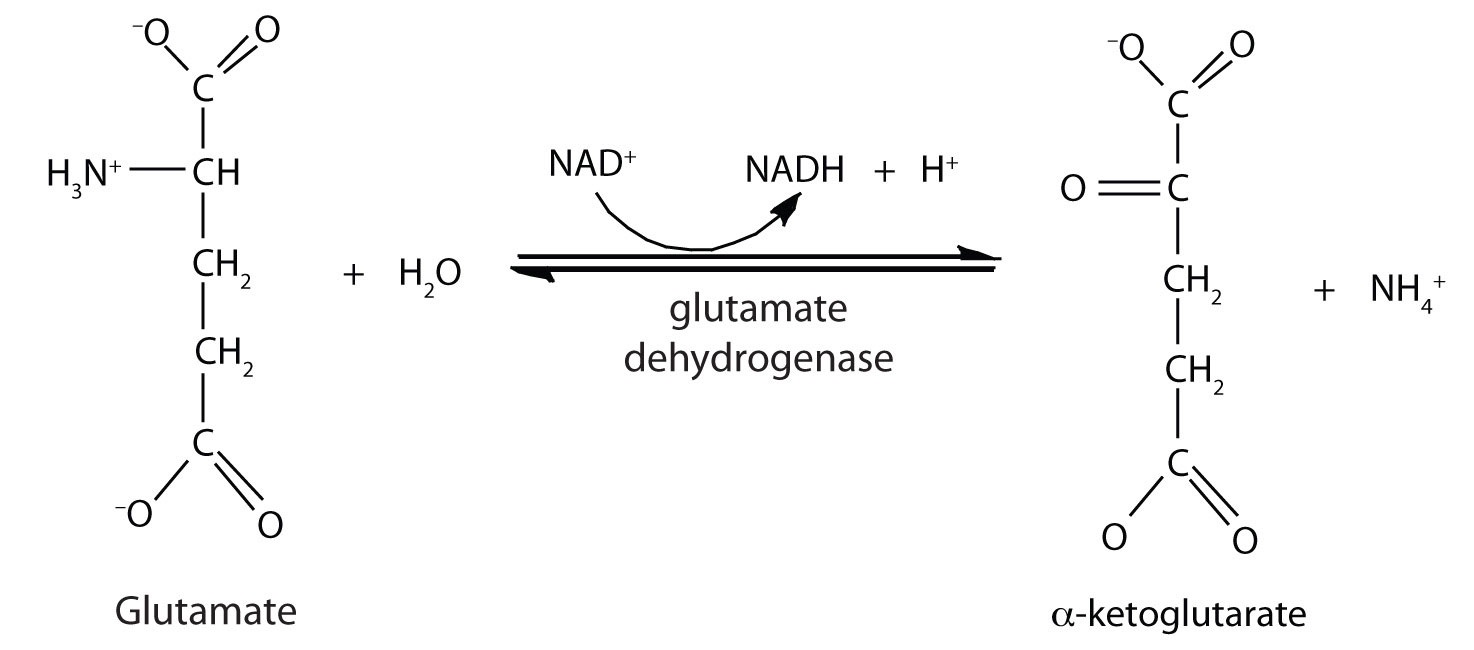25.3: Amino Acid Catabolism - The Amino Group
- Page ID
- 86386
- Describe how nitrogen is conserved from amino acids.
The liver is the principal site of amino acid metabolism, but other tissues, such as the kidney, the small intestine, muscles, and adipose tissue, take part. Generally, the first step in the breakdown of amino acids is the separation of the amino group from the carbon skeleton, usually by a transamination reaction. The carbon skeletons resulting from the deaminated amino acids are used to form either glucose or fats, or they are converted to a metabolic intermediate that can be oxidized by the citric acid cycle. The latter alternative, amino acid catabolism, is more likely to occur when glucose levels are low—for example, when a person is fasting or starving.
Transamination
Transamination is an exchange of functional groups between any amino acid (except lysine, proline, and threonine) and an α-keto acid. The amino group is usually transferred to the keto carbon atom of pyruvate, oxaloacetate, or α-ketoglutarate, converting the \(alpha\)-keto acid to alanine, aspartate, or glutamate, respectively. Transamination reactions are catalyzed by specific transaminases (also called aminotransferases), which require pyridoxal phosphate as a coenzyme.

In an \(alpha\)-keto acid, the carbonyl or keto group is located on the carbon atom adjacent to the carboxyl group of the acid.

Figure \(\PageIndex{2}\): Alanine aminotransferase (ALT) catalyzes the transfer of an amino group from alanine to \(alpha\)-ketoglutarate, forming pyruvate and glutamate.
Oxidative Deamination
In the breakdown of amino acids for energy, the final acceptor of the \(alpha\)-amino group is \(alpha\)-ketoglutarate, forming glutamate. Glutamate can then undergo oxidative deamination, in which it loses its amino group as an ammonium (NH4+) ion and is oxidized back to \(alpha\)-ketoglutarate (ready to accept another amino group):

This reaction occurs primarily in liver mitochondria. Most of the NH4+ ion formed by oxidative deamination of glutamate is converted to urea and excreted in the urine in a series of reactions known as the urea cycle.

The synthesis of glutamate occurs in animal cells by reversing the reaction catalyzed by glutamate dehydrogenase. For this reaction nicotinamide adenine dinucleotide phosphate (NADPH) acts as the reducing agent. The synthesis of glutamate is significant because it is one of the few reactions in animals that can incorporate inorganic nitrogen (NH4+) into an α-keto acid to form an amino acid. The amino group can then be passed on through transamination reactions, to produce other amino acids from the appropriate α-keto acids.

